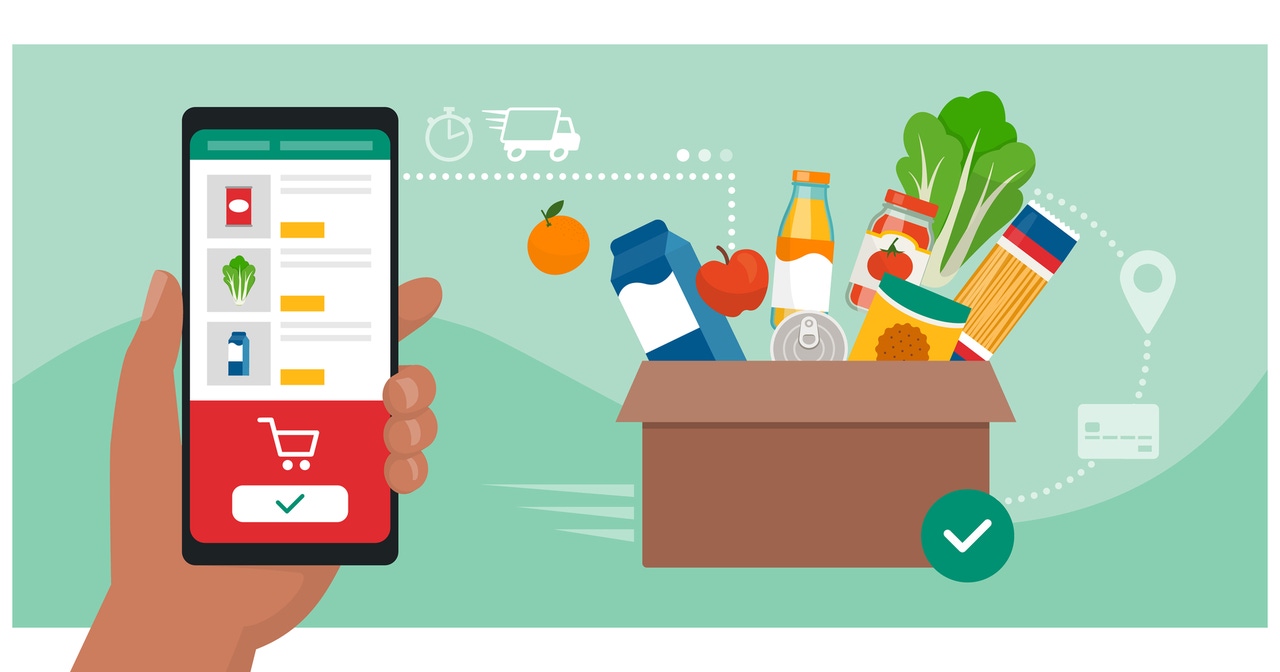A More Loyal Shopper Is Created With Online GroceryA More Loyal Shopper Is Created With Online Grocery
Focusing on a true omnichannel strategy—the combination of “bricks and clicks”—is essential to retailers’ loyalty-building strategies, says Charisse Jacques of Symphony RetailAI.

Even though grocery stores were deemed essential in the early days of the pandemic, in-store traffic experienced an understandable decline. By some estimates, foot traffic dropped 66% in the 30 days following the COVID-19 emergency declaration. But people didn’t stop needing grocery items, and because many restaurants were shuttered, food requirements actually grew for many households. And by now, we know where the demand shifted: away from store and to digital channels.
With e-commerce options like curbside pickup or same-day home delivery, many felt that it was safer and more convenient to shop online. The previously occasional online grocery shopper may have deepened their online engagement while only selectively shopping in-store. In addition, consumers who had never shopped online gave it a try for the first time.
Moving forward, understanding the ongoing role of online grocery will be critical to long-term success, especially as retailers strive to recapture or maintain shopper loyalty. Focusing on a true omnichannel strategy—the combination of “bricks and clicks”—is essential to retailers’ loyalty-building strategies, and through data from our global retailer partners, I’ve seen firsthand how this is true. We analyzed shopper data from 2020 and 2021, reviewing more than 400 million total grocery baskets in the U.S. and Europe. Looking at those insights, we were able to draw several conclusions about shopper behavior and the role of online grocery.
Embracing Online to Complement In-Store Visits Leads to Increased Spending
It’s important to convert existing in-store shoppers to “go omnichannel.” This is because when bricks-only customers start to shop across both channels, complementing their in-store shop with the online channel, they spend more. Comparing shopper data from early 2021 to quarterly results from 2020, we were able to clearly see that online helped grocers to capture greater share of wallet.
When in-store only shoppers converted to become omnichannel, their incremental spending reached up to 20% vs. what they were spending when they were only shopping in-store. We also determined that when shoppers become omnichannel, they not only increase their basket size, but they also tend to shop more frequently. In first-quarter 2021, omnichannel shoppers grew their basket size by 9% compared to the previous quarter, while at the same time shopping more frequently (6% increase in trips compared to fourth-quarter 2020).
When Bricks-Only Shoppers Go Omnichannel They Become More Loyal
We pinpoint the engagement of a retailer’s customer base by determining the frequency of their shopping trips, the breadth of the categories shopped, and how much they spend. This leads us to the following breakdown: primary households are the most loyal, spending the most and buying full baskets; secondary households divide their grocery baskets across competitors; and finally, tertiary households are those that make occasional, targeted visits.
Our data shows that primary customers who are omnichannel are 8 percentage points more likely to continue to be a primary customer, with 71% of omnichannel customers remaining a primary customer one year later, as compared to 63% of in-store shoppers. Interestingly, in both the secondary and tertiary groups, customers that are omnichannel shoppers were more likely to upgrade to the next loyalty segmentation, meaning a year later they were more engaged than the year prior. Twenty-two percent of omnichannel secondary customers migrated to the primary segmentation the following year, and 30% of tertiary (the least engaged) customers who embrace omnichannel behaviors end up upgrading to a more engaged segment. Both of these figures are compared to a mere 13% of in-store customers that end up becoming more engaged.
 Graphic courtesy of Symphony RetailAI
Graphic courtesy of Symphony RetailAI
Use Online to Migrate Shoppers Up the Loyalty Ladder
If online grocery ordering activates loyalty, then it’s time to invest in your customers at each stage where it will garner the greatest return. A great place to start is building segmentations that de-average your shopper and inform the tactics that will be used to encourage migration up the loyalty ladder. From there, you can dive into questions such as: Which shoppers are long-term engaged with e-commerce? How many e-commerce transactions in the first 12 weeks of joining is likely to lead to habitual behavior and long-term engagement? How do price and quality motivate customers in each segment? What are my key items that need to always be in stock, so that they’re available online to be fulfilled by a local store? Are there particular types of in-store products that are not typically bought online, and does this vary by customer segment? Could this be an untapped opportunity for driving in-store-only shoppers to add online orders to their shopping habits?
The higher a customer is on the loyalty ladder—moving from tertiary to secondary to the holy grail of primary—the more valuable they are to you. Once they’re at the top, in that primary, more loyal customer spot, retain them using your online channel to do so. Retaining omnichannel shoppers, and encouraging in-store shoppers to make online purchases, will yield long-term loyalty for retailers in the new grocery landscape.
Charisse Jacques, SVP of global customer-centric retailing services for Symphony RetailAI, has more than 20 years’ experience of helping retail and consumer-oriented organizations achieve their goals through innovative strategic thinking, data-driven decision making and analytics.
About the Author
You May Also Like



.webp?width=300&auto=webp&quality=80&disable=upscale)
